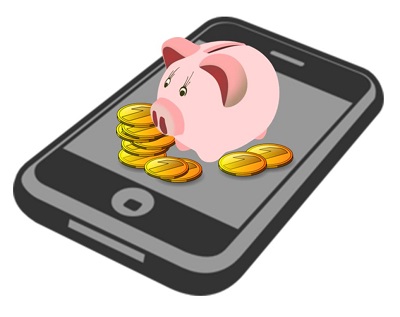Adyen report highlights the potential power of mobile payments for banks
Adyen, an international payment services company, has released its latest Mobile Payments Index report, which is published every quarter and highlights the trends that exist within the mobile commerce space. The report shows that more than 27% of global payments are being made on mobile devices, and this number is expected to increase in the coming years as more merchants engage mobile consumers. Financial institutions may be missing out on a major opportunity in this sector, however, because of their relatively slow adoption of mobile payments.
Point-of-sale applications from banks could become powerful tools for merchants
The report suggests that banks could be losing revenue if they do not provide their merchant customers with effective point-of-sale applications. While the majority of mobile payments are made online, a growing number of people are beginning to use their devices to purchase products in physical stores. Without the needed point-of-sale applications, retailers will find it difficult to participate in mobile commerce, which may become a problematic issue for them in the coming years.
Banks could see major benefits from the mobile commerce space
 Banks could benefit greatly from embracing mobile payments. Offering mobile services to customers can enhance the relationship with these customers, potentially ensuring their continued loyalty. Mobile commerce services could also become a significant revenue stream for banks, largely due to the rapid growth that the mobile payments market is experiencing currently. Mobile services could also give banks access to more consumer data, which would allow them to market products more effectively and provide better services in the future.
Banks could benefit greatly from embracing mobile payments. Offering mobile services to customers can enhance the relationship with these customers, potentially ensuring their continued loyalty. Mobile commerce services could also become a significant revenue stream for banks, largely due to the rapid growth that the mobile payments market is experiencing currently. Mobile services could also give banks access to more consumer data, which would allow them to market products more effectively and provide better services in the future.
Banks are still concerned about the security of the mobile payments sector
One of the reasons that banks have shown some hesitation in engaging in mobile payments has to do with security concerns. The security of mobile commerce platforms has been a hot topic in the past and many banks are not yet convinced that consumer financial information can be protected in the mobile commerce space. Improved security has relieved some of these concerns, but they still remain.
This age group is among the early adopters of this type of authentication technology, says the USAA.
The USAA financial services company has recently discovered that its biometric authentication technology for its mobile banking services has achieved popularity in an interesting and unexpected group of the population.
What it has found is that it is seniors who are among the most likely to be early adopters for this mobile security tech.
What the USAA’s figures showed was that among the over 400,000 customers that have opted into using voice, facial, or touch biometrics mobile security technology, the average age is 35 years old. That said, among those mobile banking users who are above that median age, a sizeable 15 percent are seniors (people over the age of 65 years old). That said, it even recorded that there were 5 users who were over the age of 90 years.
This mobile banking security trend is quite an interesting one, as this type of tech is usually associated with the very young.
 The fraud operational excellence and strategic initiatives executive at the USAA, Rick Swenson, shared the demographic parsing at a roundtable discussion that had been held by the Center for the Study of Financial Innovation, in London. The USAA first began its use of biometrics through voice and facial recognition, in February. Inside of a month from the launch of this optional security verification feature, there had been 200,000 members who were enrolled.
The fraud operational excellence and strategic initiatives executive at the USAA, Rick Swenson, shared the demographic parsing at a roundtable discussion that had been held by the Center for the Study of Financial Innovation, in London. The USAA first began its use of biometrics through voice and facial recognition, in February. Inside of a month from the launch of this optional security verification feature, there had been 200,000 members who were enrolled.
In April, the USAA added fingerprint authorization to its mobile security biometrics options. According to Swenson, developing these biometrics options was not an expensive venture. He compared it to the cost of developing remote deposit capture tech (in which smartphones can be used to take a picture of a check in order to deposit it into their accounts).
That said, it does make sense that seniors would be among the first to adopt this mobile banking security option. According to communications consultant Keith Gold, formerly of IBM Banking and Financial Services Europe, this type of authentication could be very appealing to people who could potentially struggle to remember a PIN or password whenever they needed it, or who might struggle to be able to type it into a smartphone using the tiny digital keys of a touchscreen keyboard.
 Banks could benefit greatly from embracing mobile payments. Offering mobile services to customers can enhance the relationship with these customers, potentially ensuring their continued loyalty. Mobile commerce services could also become a significant revenue stream for banks, largely due to the rapid growth that the mobile payments market is experiencing currently. Mobile services could also give banks access to more consumer data, which would allow them to market products more effectively and provide better services in the future.
Banks could benefit greatly from embracing mobile payments. Offering mobile services to customers can enhance the relationship with these customers, potentially ensuring their continued loyalty. Mobile commerce services could also become a significant revenue stream for banks, largely due to the rapid growth that the mobile payments market is experiencing currently. Mobile services could also give banks access to more consumer data, which would allow them to market products more effectively and provide better services in the future.
 The fraud operational excellence and strategic initiatives executive at the USAA, Rick Swenson, shared the demographic parsing at a roundtable discussion that had been held by the Center for the Study of Financial Innovation, in London. The USAA first began its use of biometrics through voice and facial recognition, in February. Inside of a month from the launch of this optional security verification feature, there had been 200,000 members who were enrolled.
The fraud operational excellence and strategic initiatives executive at the USAA, Rick Swenson, shared the demographic parsing at a roundtable discussion that had been held by the Center for the Study of Financial Innovation, in London. The USAA first began its use of biometrics through voice and facial recognition, in February. Inside of a month from the launch of this optional security verification feature, there had been 200,000 members who were enrolled.